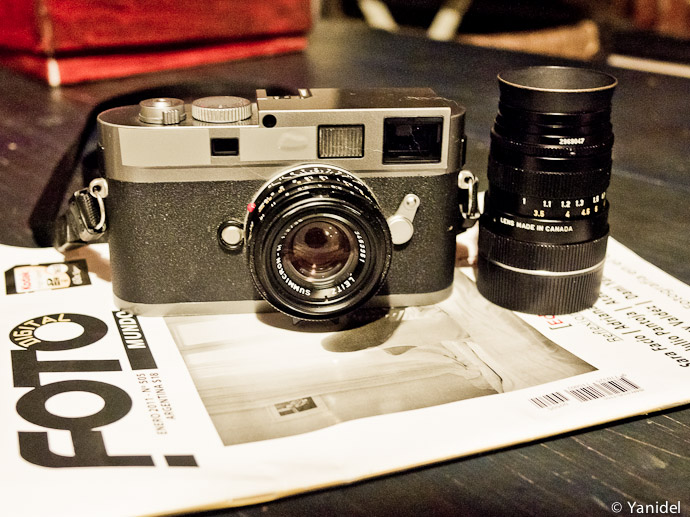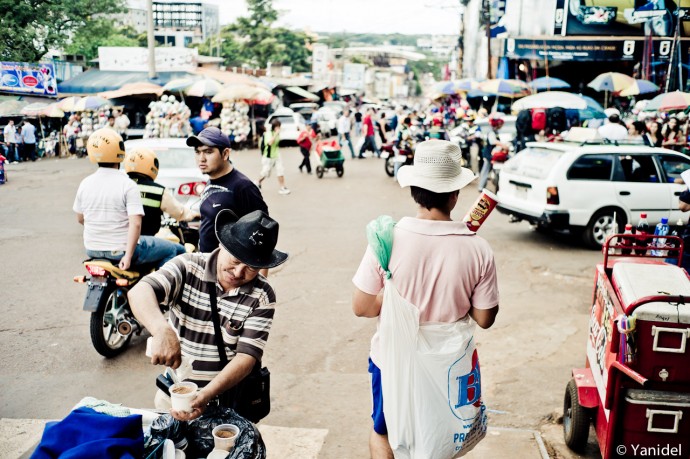Note that this article focuses on Leica gear so if you are not particularly interested in equipment talks, just scan through the numerous images that illustrates it.
One of the question photographers ask themselves the most while preparing for an outing or trip is “What equipment should I bring along?”. The considerations or requisites that come into such decision are numerous and range from the location, type of assignment, style of shooting, weight, ergonomics or even safety. In my Paris years, I shot mainly with a 35mm Lux Asph and a 60mm Hexanon. I thought it was a perfect combo to depict the atmosphere of the City of Lights. When we moved to Argentina, I brought along these lenses, together with an older 35mm Summicron IV, a 50mm Summicron and a 90mm Tele-Elmarit. Since then, I have been trying several combinations to define the kit I will take along once we hit the core part of our world trip (by the month of May). My intent is therefore to take only 2 lenses as I wantto travel light and keep a simplistic approach to street photography.
Therefore when the opportunity to visit the Iguazu Falls for a week arose, I decided to experiment with the lightest kit possible out of my line-up. It turned out to be the 35mm Summicron (version IV) bundled with the 90mm Tele-Elmarit. This article will therefore relate on my impressions on the use of the smallest M travel kit, with as usual, a special focus on street photography
.
I) Lens choice
As said above, I usually took along 35mm + 60mm (or 50mm) when in the streets of Paris. Yet the main attraction of this trip was landscapes (Iguazu Falls), so I opted for a 90mm lens instead of a 50mm. Indeed, I knew that we would spend a lot of time in a bus (impossible to get close in this instance) and that I would want the ability to compress several planes. The 90mm focal length is perfect for that matter and probably the longest one that can be focused with accuracy on the M system. As for the 35mm field of view, this is my standard one (see my 35mm or 50mm article). A wider lens would also have worked well in specific landscapes yet that would have meant a third lens, which was a no go. Indeed, I think it is much better to master perfectly a couple of lenses rather than spend time on procrastinating on the best choice for a specific shot. Two lenses for two very different kinds of shots, it made the whole shooting experience much more enjoyable. (click on pictures to enlarge)

Smoke and ride – Leica M9 with 35mm Summicron at F2.8, 1/1000, ISO200
Regarding the aperture of these two lenses, the 35mm Cron is a F2.0 lens while the Tele-Elmarit opens only to F2.8. On a full frame sensor such as the M9’s, F2 on a 35mm lens allows you to have a relatively thin depth of field if your subject is within 3 meters. This is an important criteria to me, and I would add that within 2 meters (where most of my shots happen), F2.8 is probably the best aperture choice in order to balance accurate focus and still maintain the ability to blur backgrounds. I did wish I had the F1.4 aperture of my 35mm Lux Asph on a few instances, yet overall, the Summicron was fast enough for the type of scenes I encountered during the week. Regarding the 90mm Tele-Elmarit, its F2.8 max aperture also provides a good balance between depth of field thinness and the ability to focus it accurately. Obviously, in low light shooting, the Tele-Elmarit becomes pretty much useless, yet I am not a big fan of shooting at night with long lenses anyways.

The plant sellers – Leica M9 with 90mm Tele-Elmarit at F4.0, 1/500, ISO200
II) Size and ergonomics
When you go through intensive days as we did (7h to 19h on average) and walk for hours, the less weight you carry, obviously the better. The two lenses kit + M9 weighted only a about a kilo. This is a gain of about 300 grams versus my standard kit. Though obviously it won’t seem a lot in absolute terms, I did feel quite a difference as I held my camera in my hand most of the day. The M9 + 35mm Cron IV does feel extremely light, to the point that it is never a bother. As for the 90mm Tele-Elmarit, I mounted it only for specific shots, but I loved the feeling of using such a light long lens.
In terms of size, both lenses have a 39mm filter thread which compares to the 46mm of the 35mm Lux Asph and 58mm of the 60mm Hexanon. It makes no doubt that both lens make the system look significantly smaller. Indeed, with the 60mm lens mounted, and to some extend the 35mm Lux Asph, the M9 almost looks like a small DSLR. With the 35mm Cron mounted, the M9 looks like a big compact camera. This brings two advantages :
– the camera looks less obtrusive to your subject.
– it brings less unwanted attention. This was quite important to me since we did spend a few hours in cities with a high crime rate (Foz do Iguazu and Cuidad del Este).
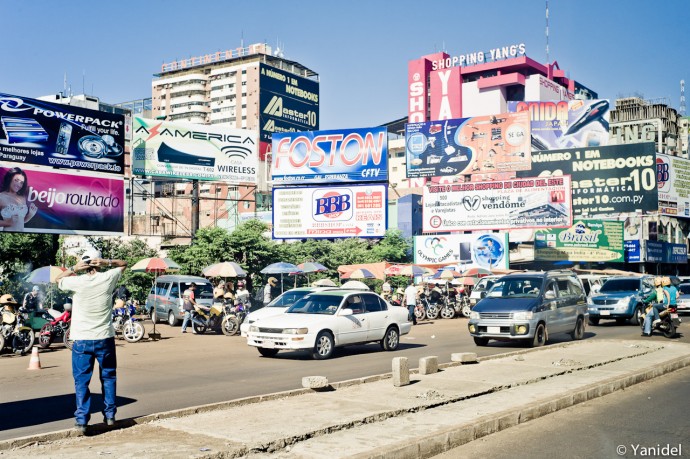
Shopping in Cuidad del este – Leica M9 with 35mm Summicron IV at F5.6, 1/500, ISO200
As mentioned above the 35mm Cron IV + M9 feels very light and a pleasure to carry in one hand all day. You can also hold the combo by putting your hand around the lens which is less convenient to do with a larger lens. I also especially like the Cron’s aperture ring as I somehow found it much smoother to use the ones mounted on more modern lenses such as the Lux Asph. As for the Tele Elmarit, my biggest bothers about this lens was the slightly long focus throw and the need to always have the shade on to avoid flare. My sample also has a bit of a stiff focus ring, yet I guess it is specific to my lens. This apart, it worked flawlessly.

Iguazu train station – Leica M9 with 90mm Tele-Elmarit at F2.8, 1/180, ISO200
III) Image Quality
Both the 35mm Summicron IV and the Tele-Elmarit are lenses with design that are almost four decades old, so how did they fare versus more modern lenses such as the Summilux Asph and the Hexanon ?
35mm Summicron IV
My sample is a version IV which preceded the introduction of the aspherical versions. This lens has been used extensively by thousands of photographers and was once a reporter’s favorite. Let’s say it straigtht away, it is a Leica lens and his performance is simply stunning for such a tiny lens. It will greatly outperform many of the DSLR lenses currently on the market. Also, if you do not print large sizes or mostly post your pictures on the internet, I’ll doubt that your eye will detect significant differences with the aspherical versions. Nevertheless, let’s be perfectionist and imagine our images have a gallery show as destination, how do the 35mm Summicron and 35mm Summilux Asph compare?
In terms of sharpness, the 35mm Lux Asph wins hands down at all apertures up to F5.6, but mainly in the corners of the picture. From F5.6 to F8.0, it is basically a tie, you would really need to pixel-peep to detect a difference. The underlying question becomes then, do corners really matter in street photography ? I’d say that if you shoot between F2.0 to F4.0 in the 2 to 3 meters range (where most scenes happen), the depth of field will be thin in most cases and corners will look blurred anyways. In all the shots I took that week, I did not see a single shot where the lower performance in the corner did actually impact significantly the image quality.
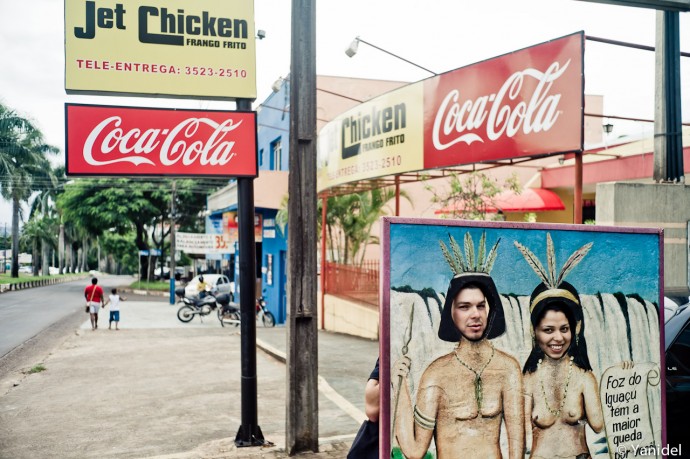 Native tourists – Leica M9 with 35mm Summicron IV at F2.8, 1/1000, ISO200
Native tourists – Leica M9 with 35mm Summicron IV at F2.8, 1/1000, ISO200
In terms of contrast, the 35mm Cron is clearly less contrasty than the Lux Asph. This should be no surprise since it is a common characteristic of aspherical lenses. This being said, I liked the lesser contrast of the 35mm Cron on sunny days, I found the pictures to be more pleasing and easier to work with in post processing. In general, it is always easier to add contrast to a scene then decrease it. This being said, there are a few instances where the high contrast of the Lux Asph would have helped, especially while at the Iguazu Falls. Indeed, the pictures resulted a bit dull due to the high quantity of mist, and I could never add back in post processing some of the pop that the Lux could have provided.
Regarding bokeh, it is evidently up to one’s personal preferences, but let’s say that the 35mm Cron wide open will render out of focus areas a bit more curly while the Lux Asph is a bit smoother. By F2.8, the rendering is pretty much the same, at least not different enough to have an impact on the look of a picture.
As for flare, I broke the Cron’s shade a few months and haven’t replaced it. I know that purists will say that one should always use shades, but in the case of this lens, I did not find a single shot where flare had an impact of the image quality. And anyways, I liked so much the small size of the lens, that adding the shade would double the length.
Finally, let’s mention the wide open look of this lens. It is a very special one since it is lower contrast, vignettes significantly, has very soft corners, renders a curly bokeh and tend to have bright areas glow with a halo effect. It is a gorgeous one, especially for portraits, yet I find it differs too much from other apertures within a street photography series. I did therefore restring myself to use it only for portraits or shots was F2 was absolutely necessary. In fact, I used the 35mm Cron mainly at F2.8 and F4.0 and loved the performance it provided at these apertures.
 Leica M9 with 35mm Summicron at F2.0, 1/2000, ISO200
Leica M9 with 35mm Summicron at F2.0, 1/2000, ISO200
90mm Tele Elmarit
This is by far the smallest lens in the whole Leica long lenses stables. Since it is a tele lens, Leica could design it small which makes it so convenient for travel. It is also a lens you could easily carry in a pocket, which is not the case of any other 90mm lens.
Performance wise, sharpness on center already reaches excellence at F2.8 while corners lag a bit. Actually, according to Jean-Marie Sepulchre DXO testing (I highly recommend his ebook on the Leica M9 and lenses), the Tele-Elmarit reaches maximum sharpness on the whole field at F4.0 already. This is a performance that is only matched by the modern gigantic 90mm Cron APO, quite an achievement for such a tiny and unexpensive lens. I therefore used this lens mainly at F4.0 and the results were excellent. Like the 35mm Cron, its contrast is a bit lower than aspherical lenses (especially wide open), yet I could easily add it back in post processing. Regarding bokeh, I found it very smooth, never diverting the attention from the subject in focus. Actually I was extremely suprised by the smoothness of the bokeh while shooting head to waist portraits, it was simply gorgeous.
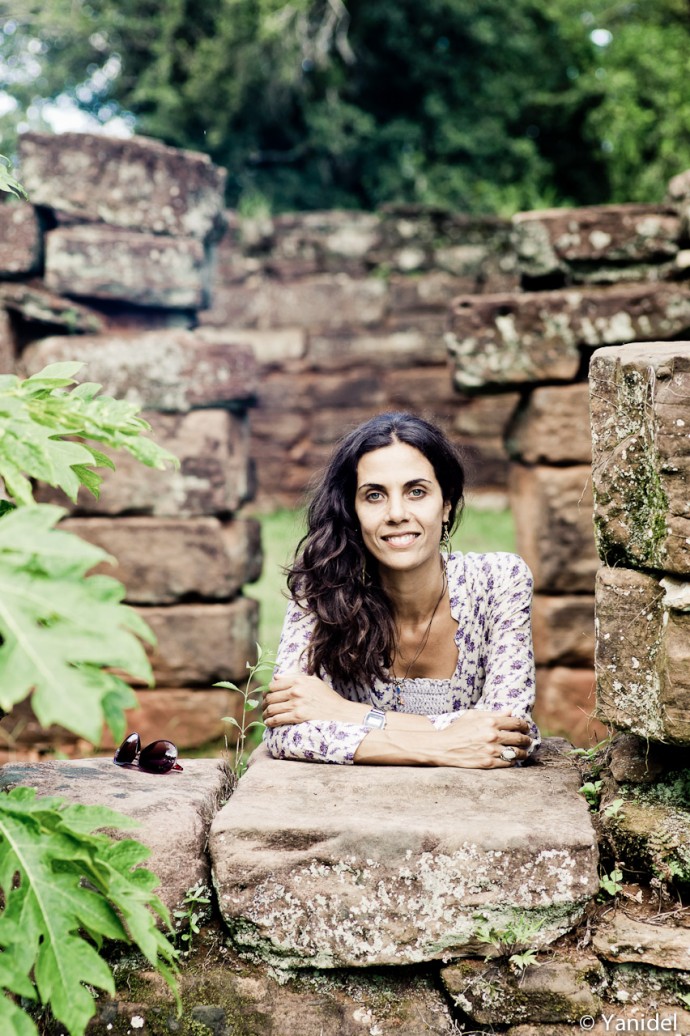
My sweetheart in San Ignacio ruins – Leica M9 with 90mm Tele Elmarit at F4.0, 1/250, ISO200
Let’s move on to the main drawback which is flare. This is unluckily a lens that has a tendency to flare whenever a light source is close to the field of view. A hood is therefore a must, and even with one mounted, it won’t be able to avoid flare in all instances. I did have a few shots impacted by flare during the week (I use a non-standard hood) and seven in situations where I did not expect it. It is a bother even though sometimes flare can actually add to a picture.
 Faithbook – Leica M9 with 90mm Tele-Elmarit at F8.0, 1/125, ISO200
Faithbook – Leica M9 with 90mm Tele-Elmarit at F8.0, 1/125, ISO200
IV) So, is the smallest M travel kit also the best one ?
After I went through the whole post processing of the pictures taken during this trip, the question that obviously popped up in my mind was “Could this kit actually replace my usual 35mm Lux Asph + 60mm Hexanon combo for our extended trip ?”
Here are a few arguments that could sustain this idea :
– in terms of size, the 35mm Cron + Tele-Elmarit wins hand down. It is both significantly lighter and smaller than any other 35mm + long lens combination.
– ergonomics wise, the 35mm Cron + M9 feels like a compact camera. It is great to handle and causes no fatigue even when walking a full day. The aperture ring is the best I have used in the Leica stable. The 90mm Tele-Elmarit is a bit more difficult to use due to the longer focus throw, yet its small size still make it very easy to handle and it fits in a pocket.
– in terms of image quality, both lenses are high performers. The main difference with my standard kit being the level of contrast and corners’ performance. Contrast can be taken care of in post processing and soft corners are usually not an issue in street photography. As for the 35mm Cron’s special look at F2.0, it makes it difficult to integrate within a series, so it is really a lens to be used mostly from F2.8 and smaller.
– I found that the 39mm filters of this lenses made people take my camera much less seriously then when I have the 60mm Hexanon mounted (and to some extent, the 35mm Lux Asph). It does look like an old crappy compact camera and not like a DSLR. It both allows to be less obtrusive and give less unwanted attention to potential snatchers.
– the total acquisition value of my two used lenses was 750€. It compares to 3400€ for the 35mm ASph Lux + 60mm Hexanon. When traveling a lot, there is obviously a risk of theft and the M9 itself already represents a lot of value. Reducing the exposure is something that I will definitely take into account.

Leica M9 with 90mm Tele-Elmarit at F2.8, 1/125, ISO200
As for arguments in favour of the 35mm Lux Asph and 60mm Hexanon, I found that :
– for low light, the 90mm Tele-Elmarit is useless while the 60mm Hexanon will excel at F1.4. As for the 35mm Cron, it is surpassed by the Lux Asph F1.4 aperture and its excellent imagery wide open.
– both lenses will provide more background separation. That is a tool I used a lot in Paris but I found that somehow it does not work as well in destinations with less lyricism. Still, the 35mm Lux Asph can clearly separate a subject from the background at 5 meters while the Cron won’t be able to. Same applies when comparing the 60mm Hexanon with the Tele-Elmarit.
– image quality at its best. Contrast, clarity and sharpness on the whole field are trademarks of these lenses. If you want the absolute best and plan to print very big, you’ll need to lenses.
The chips seller – Leica M9 with 35mm Summicron IV at F2.8, 1/2000, ISO200
All in all, the 35mm Cron + 90mm Tele-Elmarit combo comes out quite favorably. This was quite a surprise to me. I loved the diminutive size as well as the handling, and was quite satisfied with the image quality. Let’s not forget that in street photography, image quality will not be the determining factor of whether a shot is good or not as so many other variables come into play. The imagery produced by this kit is in my opinion as good as you’ll ever need for street photography. Finally, I also liked the spread in field of view between the two focal lengths as it allowed me to take significantly different types of shots with one lens or another. Indeed, both lenses resulted complementary while I often found 35mm and 60mm to be more substitutes to one or another.
In the end, I have decided to put that kit at test a few more weeks, and see how it fares in the streets of Rosario. You can therefore expect quite a few shots taken by these lenses in the coming weeks…
